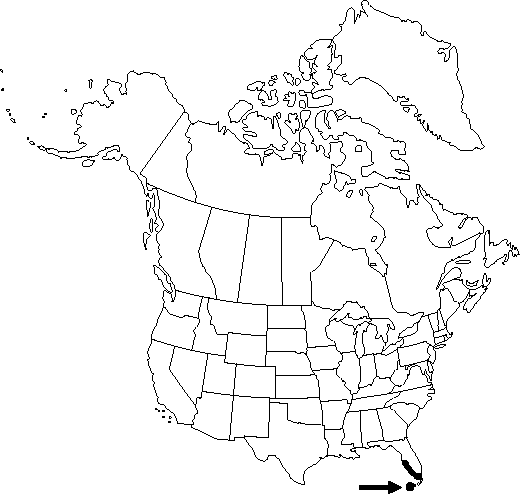Annona squamosa
Sp. Pl. 1: 537. 1753.
Shrubs or trees, to ca. 8 m; trunks short, not buttressed at base. Principal leaves late deciduous; petiole 4-22 mm. Leaf blade narrowly elliptic to oblong or lanceolate, 5-17 × 2-5.5 cm, base broadly cuneate to rounded, apex acute to obtuse; surfaces glaucous, abaxially variably pubescent, adaxially glabrate. Inflorescences solitary flowers or fascicles; peduncle slender, to 2 cm, becoming enlarged in fruit. Flowers: sepals deltate, 1.5-2 mm, apex acute, surfaces abaxially pubescent or glabrous; outer petals pale green above purplish base, oblong or lance-oblong, 1.5-3 cm, base slightly concave, surfaces abaxially furrowed, pubescent, adaxially thickened, keeled; inner petals ovate, keeled, minute, nearly as long as stamens; stamens club-shaped, curved, 1-3 mm; connective dilated, flattened and truncate; pistils conically massed, separable at anthesis, later connate. Syncarp pendulous on thickened peduncle, greenish yellow, glaucous, mostly ±globose, 5-10 cm, muricate. Seed ellipsoid to obovoid, 1-1.4 cm.
Phenology: Flowering spring–early summer.
Habitat: Dryish sandy substrates, dry hammocks
Elevation: 0-50 m
Distribution

Introduced; Fla., native to West Indies, naturalized or cultivated circumtropically.
Discussion
The fruit of Annona squamosa (Annona sect. Atta C. Martius) has delicious whitish pulp, and it is popular in tropical markets.
Selected References
None.